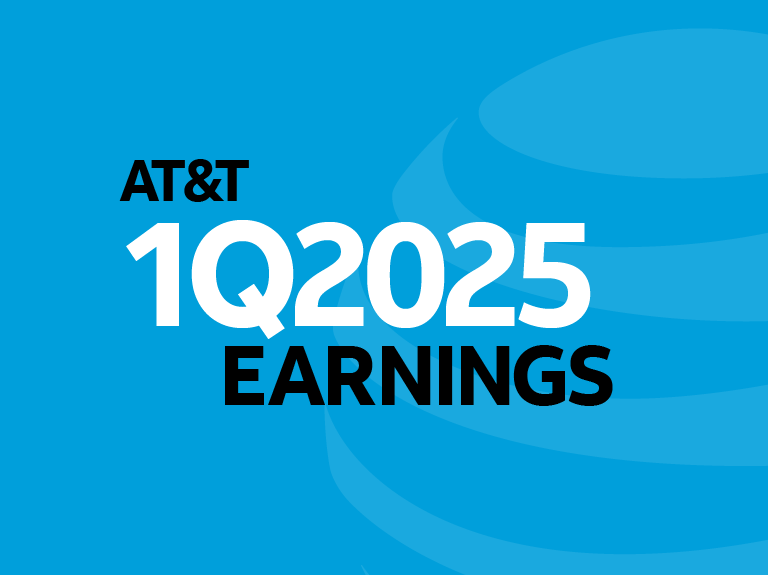AT&T CFO Pascal Desroches Updates Shareholders
AT&T CFO Pascal Desroches Updates Shareholders
Pascal Desroches, senior executive vice president and chief financial officer of AT&T Inc.* (NYSE:T) spoke today at the Credit Suisse Communications conference, where he provided an update to shareholders.
Desroches remarked that in the most recent quarters, AT&T’s mobility strategy of focusing on the long-term value of its high-value customer base has been successful in reversing previous subscriber losses. These gains, coupled with the ongoing opportunities to drive out costs through the transformation of the company’s distribution channels, gives AT&T confidence in its ability to continue to deliver profitable postpaid subscriber growth.
Desroches said that AT&T’s network is performing as well as it ever has and that as the company accelerates its deployment of C-band spectrum, it expects to cover 200 million people by the end of 2023, strengthening its ability to deliver even faster average speeds across the country and to densify its network as demand for 5G grows and the use cases for the technology expand. Desroches indicated that the company’s outlook includes expectations for continued elevated wireless competition and thus recent promotional activity by other wireless providers does not come as a material surprise.
Desroches also said the company’s plan to double the size of AT&Ts fiber footprint to about 30 million customer locations by year-end 2025 should open up new use cases and opportunities given the company’s integrated fiber deployment strategy and penetration trends in areas where fiber has already been deployed.
Desroches expects WarnerMedia’s second-quarter results to benefit from positive comparisons to the second quarter of 2020, which represented the worst of the pandemic impacts in that business unit. He also said that in the second half of the year, he expects WarnerMedia to benefit from improvements in advertising revenues, a return to theaters and run rate benefits from the second-half 2020 restructuring. He also expressed confidence in the upcoming planned international launch of HBO Max and in the company’s ability to deliver on its guidance of 67 to 70 million HBO Max customers by the end of 2021.
Desroches reiterated the guidance AT&T previously provided for 2022-2024 after the expected close of the pending WarnerMedia-Discovery transaction: Low-single digit revenue CAGR and mid-single digit adjusted EBITDA and adjusted EPS CAGR.1, 2, 3 The company expects to generate $20 billion plus in free cash flow on an annual basis post-close, with a dividend payout ratio in the 40% to 43% range4 for a total dividend payout of $8 billion to $9 billion per year.
Also during that time period, the company expects to increase capital investment to around $24 billion annually, focused on 5G and fiber. The company also expects net debt to adjusted EBITDA in the 2.6x range after the transaction closes, moving to less than 2.5x by year-end 2023.5 AT&T expects to have the optionality to repurchase shares once net debt to adjusted EBITDA is less than 2.5x. Ultimately the company’s capital allocation decisions after close of the WarnerMedia transaction will be guided foremost by where management expects to generate the best returns for its shareholder base.
Desroches also reiterated that the company doesn’t expect to reset the current dividend until after the proposed WarnerMedia-Discovery transaction is approved and closed. After close of the transaction, he expects that the resized dividend will continue to deliver a very attractive yield in the 95th percentile of dividend yielding stocks.
AT&T plans to announce second-quarter 2021 results on Thursday, July 22, before the market opens.
1 Compound annual growth rate.
2 EBITDA is operating income before depreciation and amortization.
3 The company expects adjustments to 2021-2024 reported diluted EPS to include merger-related amortization ($4.3 billion for 2021 and approximately $1 billion per quarter in 2022 until closing of the WarnerMedia transaction) and other adjustments, a non-cash mark-to-market benefit plan gain/loss, and other items. The company expects the mark-to-market adjustment, which is driven by interest rates and investment returns that are not reasonably estimable at this time, to be a significant item. AT&T’s 2022-2024 EPS depends on future levels of revenues and expenses which are not reasonably estimable at this time. Accordingly, we cannot provide a reconciliation between these projected non-GAAP metrics and the reported GAAP metrics without unreasonable effort.
4 Dividend payout ratio is total dividends paid divided by free cash flow. Free cash flow is a non-GAAP financial measure that is frequently used by investors and credit rating agencies to provide relevant and useful information. Free cash flow is cash from operating activities minus capital expenditures. Due to high variability and difficulty in predicting items that impact cash from operating activities and capital expenditures, the company is not able to provide a reconciliation between projected free cash flow and the most comparable GAAP metric without unreasonable effort.
5 Net Debt to Adjusted EBITDA ratios are non-GAAP financial measures that are frequently used by investors and credit rating agencies to provide relevant and useful information. AT&T’s Net Debt to Adjusted EBITDA ratio is calculated by dividing the Net Debt by the sum of the most recent four quarters Adjusted EBITDA. Adjusted EBITDA estimates depend on future levels of revenues and expenses which are not reasonably estimable at this time. Accordingly, we cannot provide a reconciliation between Adjusted EBITDA and the most comparable GAAP metric without unreasonable effort.



